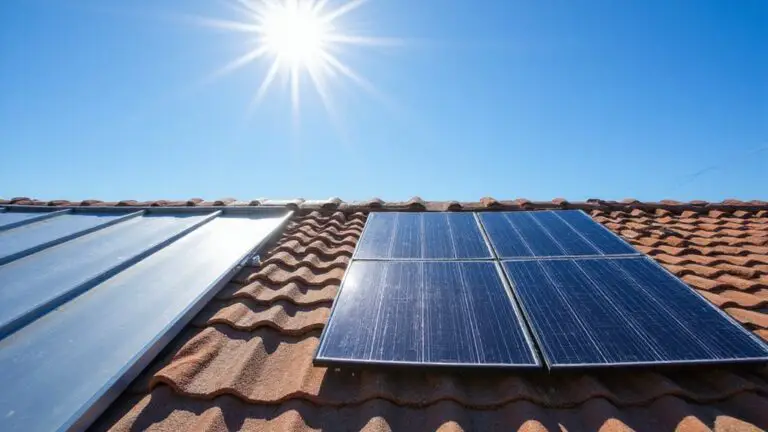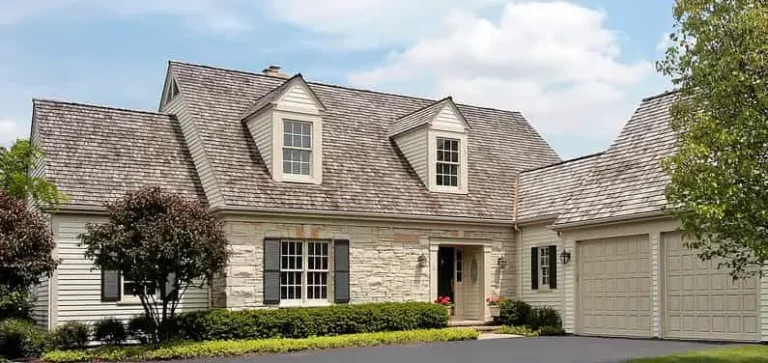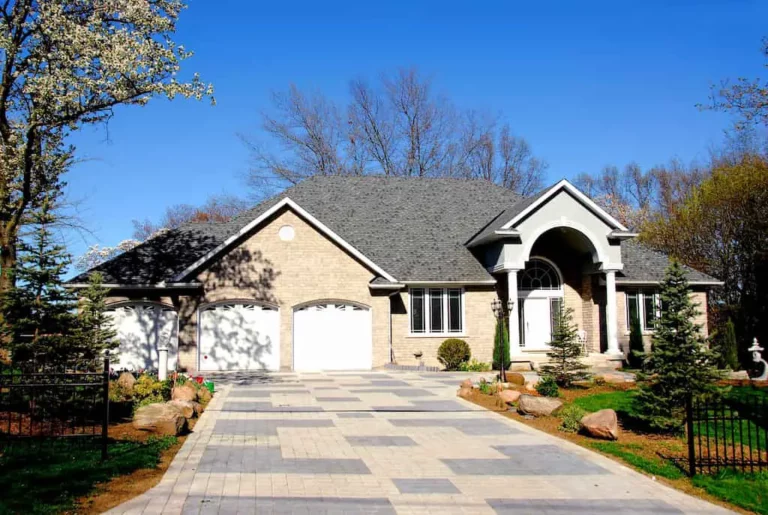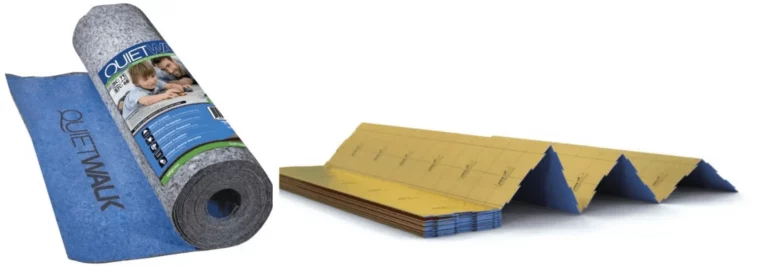Top Roofing Materials for Cold Climates: 10 Tips

Imagine your neighbor installed a sleek metal roof last winter, and it easily shed snow while you struggled with ice dams and leaks. Choosing the right roofing materials for cold climates is essential for maintaining a safe and comfortable home. But with so many options available, how do you know which materials will best withstand harsh winter conditions? Let’s explore some effective tips to help you make an informed decision.
Understanding Cold Climate Challenges
When roofing in cold climates, you face unique challenges that can impact the integrity of your home. The drastic temperature shifts can cause roof decking to contract, leading to gaps in flashing and fasteners. This seasonal expansion and contraction stress your entire structure, potentially damaging foundations. Moisture accumulation can also create ice dams, blocking drainage and promoting mold growth in insulation. In addition, materials like asphalt shingles struggle to seal properly below 45°F, risking wind uplift. Even installation presents hurdles, as icy surfaces can be hazardous for crews. Understanding these challenges is key to ensuring your roof remains durable and effective over time, fostering a safe, welcoming space where you and your loved ones truly belong. Proper roof maintenance before winter can significantly reduce the risks associated with these cold-weather issues.
Benefits of Slate Roofing
While many roofing materials struggle in cold climates, slate roofing stands out for its exceptional benefits. Its durability against heavy snowfall means you won’t have to worry about structural compromise or cracking. Slate’s smooth surface and temperature-regulating properties help resist ice dam formation, minimizing ice-related damage during those dreaded freeze-thaw cycles. Plus, the non-porous composition prevents moisture absorption, further reducing risks. You’ll appreciate how snow effortlessly slides off your slate roof, decreasing weight accumulation and pressure. With slate, you’re not just choosing a roof; you’re selecting a long-lasting solution that enhances your home’s beauty and strength. Natural slate roofs can last over 100 years when installed properly, providing you with a lasting investment. Embracing slate means embracing comfort, confidence, and a strong sense of belonging to a community that values quality and resilience.
Advantages of Metal Roofing
Metal roofing offers a range of advantages that make it an excellent choice for cold climates. It effectively sheds snow, preventing excessive accumulation and reducing the risk of ice dams, so you won’t have to worry about structural strain. The lightweight design handles heavy snow loads without sagging, ensuring the integrity of your home. Plus, its low thermal conductivity keeps the heat in, maintaining consistent indoor temperatures and reducing the demand on your heating system. Unlike traditional shingles, metal roofing withstands freezing and thawing cycles without cracking or warping, giving you peace of mind even in harsh weather. With its durability and energy efficiency, metal roofing helps create a cozy, protected space for you and your loved ones. Additionally, metal roofs require less maintenance than shingles, particularly in cold climates, simplifying your upkeep.
Exploring Fiberglass Asphalt Shingles
How do fiberglass asphalt shingles hold up in cold climates? While they’re budget-friendly and easy to install, these shingles can struggle in freezing temperatures. Here are some key points to contemplate:
Fiberglass asphalt shingles are budget-friendly but may struggle in freezing temperatures, making them less ideal for extreme cold climates.
- Brittleness: They may crack in extreme cold and are prone to chipping during freeze-thaw cycles.
- Installation: For best results, install above 40°F and store materials properly to avoid warping.
- Durability: Generally lighter and less durable than organic shingles, leading to more frequent replacements in harsh conditions. Additionally, fiberglass shingles are known for their ability to withstand cracking and moisture damage, which can be particularly beneficial in cold climates.
- Fire Rating: They have a Class A fire rating, offering some protection but still not ideal for severe storms.
For moderate climates, fiberglass shingles work well, but you might want to explore other options for extreme cold.
The Role of EPDM Roofing
As temperatures plunge and snow accumulates, EPDM roofing emerges as a reliable choice for homeowners in cold climates. This flexible material withstands harsh conditions, retaining its structural integrity even during heavy snowfall and extreme cold. Its UV-resistant surface also protects against sun exposure, preventing degradation. Additionally, EPDM’s thermal performance means it absorbs heat in warmer seasons, helping maintain consistent indoor temperatures year-round.
With straightforward installation and minimal maintenance, you’ll appreciate the cost-effectiveness of EPDM roofing. Repairs are easy, often requiring just liquid rubber for quick fixes. Plus, this durable roofing can last 30-50 years, giving you peace of mind that you’re making an investment in your home that will serve you well through every winter ahead.
TPO Roofing: A Modern Solution
While many roofing materials struggle under the demands of cold climates, TPO roofing stands out as a modern solution that combines durability with energy efficiency. Here’s why TPO is a smart choice for your home:
- Weather Resistance: TPO’s UV-resistant material and high reflectivity reduce heat absorption, helping you stay warm.
- Durability: Its flexible membrane adapts to temperature changes, preventing cracks from heavy snow loads and ensuring robust protection against snow and ice.
- Installation Best Practices: Seams are welded watertight, ensuring long-lasting protection against leaks.
- Energy Efficiency: TPO reduces heating costs and lessens HVAC strain, keeping indoor spaces at a consistent and comfortable temperature.
Importance of Proper Insulation
Proper insulation is essential for homeowners in cold climates, because it directly impacts energy efficiency and structural integrity. By preventing up to 25% heat loss, you’ll keep your home cozy while reducing the strain on your heating systems. With R-values over 49, you can guarantee ideal heat retention, leading to lower utility bills and a smaller carbon footprint. Beyond comfort, proper insulation protects your roof from ice dams and moisture damage, extending its lifespan and safeguarding plumbing from freezing. Additionally, mineral wool insulation is highly moisture-resistant, ensuring performance even in damp conditions, which is vital for maintaining a safe and healthy home environment. Plus, investing in high-quality insulation materials makes your property more attractive to future buyers, giving you that sense of belonging in a community that values energy efficiency and sustainability. So, take the steps necessary for a warm, secure home.
Maintenance Considerations for Cold Weather
Guaranteeing your roof is ready for winter goes hand-in-hand with maintaining proper insulation. By taking the time to perform regular maintenance, you can prevent issues before they arise. Follow these essential tips:
- Clear your gutters of debris before snow arrives to guarantee proper drainage.
- Use a roof rake after heavy snowfall to remove excess snow and avoid ice dams. Ice dams can be prevented by acting promptly and ensuring proper insulation and ventilation in your attic.
- Inspect ventilation to confirm adequate airflow, balancing indoor and outdoor roof temperatures.
- Monitor snow load, checking your roof’s capacity to handle winter accumulation patterns.
Weight and Structural Requirements
When choosing roofing materials for cold climates, understanding weight and structural requirements is essential. You’ll need to know your roof’s load capacity, which generally supports 10–20 lbs per sq ft. If you’re considering traditional heavy materials like clay, retrofitting might be necessary, especially for older homes. Synthetic options, such as faux slate, offer a lightweight alternative that eases structural stress. Metal roofs shine in snowy conditions, as their slick surfaces allow snow to slide off easily, preventing excess weight. Remember, it’s vital to adhere to regional codes, especially in areas with heavy snowfall. Additionally, many roofing materials, especially metal roofing, are highly wind-resistant, which is crucial for maintaining safety during severe weather events. By focusing on weight and structural integrity, you’ll create a safer, more comfortable home for you and your family.
Making the Right Choice for Your Home
Choosing the right roofing material for your home is essential, especially in cold climates where harsh weather can take a toll. To make a wise choice, consider the following factors:
- Durability: Opt for materials like metal or synthetic tiles that resist harsh conditions and ice dam formation. Additionally, natural stone roofs are exceptionally durable against sub-zero temperatures, making them a strong contender for cold climates.
- Energy Efficiency: Select roofs that provide excellent insulation and heat retention to keep your home warm and save on energy costs.
- Snow Management: Steep slopes and lightweight options help manage snow accumulation and reduce structural stress.
- Longevity: Invest in materials like slate or metal that can last decades, minimizing replacement frequency.





